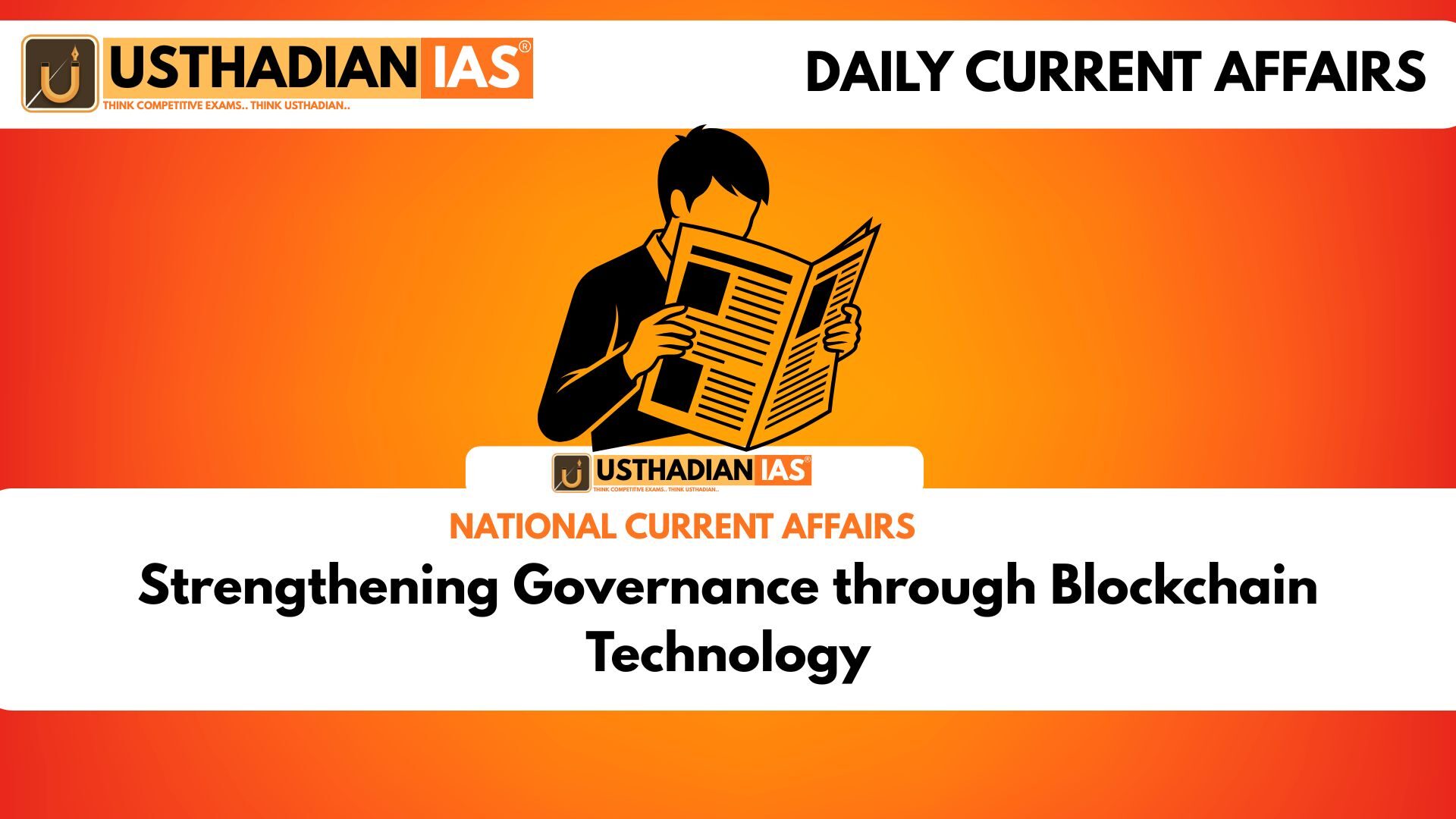Blockchain’s relevance in governance
Strengthening Governance through Blockchain Technology: The technology known as blockchain is a distributed ledger that records transactions across a network in a transparent, secure, and immutable manner. Its features of tamper-resistance and audit trail make it particularly suitable for governance reforms. Static GK fact: The first conceptual discussion of blockchain in India’s public policy was undertaken by NITI Aayog in its “Blockchain: The India Strategy” paper in January 2020, targeting “Ease of Business, Ease of Living, and Ease of Governance.”
In the Indian context, blockchain is increasingly used to record property transfers, issue certificates, manage supply-chains, and digitise elements of the judiciary. These use-cases improve transparency and help cut down dispute resolution times.
Key use-cases in governance
A prominent initiative is the use of blockchain-enabled property registries. Pilot projects under the framework allow buyers to verify ownership rights and past transfers with confidence. Secure certificate issuance is also being implemented; for example, the National Informatics Centre (NIC) built a “Certificate Chain” for tamper-proof academic record storage. Supply-chain traceability is another dimension: medicines and logistics are tracked across multiple nodes to ensure accountability at each step. The judiciary benefits as well via electronic delivery of orders and notices through ledger-based systems.
National initiative and strategic framework
In September 2024, the National Blockchain Framework (NBF) was formally launched by the Ministry of Electronics and Information Technology (MeitY) with the objective of offering Blockchain-as-a-Service (BaaS) to government departments, academia, and start-ups. Static GK fact: The NBF infrastructure is hosted across three NIC data-centres located at Bhubaneswar, Pune, and Hyderabad.
The NBF is supported by the Vishvasya Blockchain Technology Stack, which provides the infrastructure, smart contracts, APIs, and development templates. Another component is NBFLite, a sandbox platform for start-ups and academia for rapid prototyping, and Praamaanik, a blockchain solution for verifying mobile app origin.
Benefits and challenges
The major benefits include greater transparency, enhanced security, reduced fraud, and faster dispute resolution in public services. Blockchain enables accountability by creating a verifiable audit trail. However, challenges remain: these include the need for skilled manpower, standardisation of frameworks, interoperability across systems, and ensuring privacy while decentralising data. The NBF explicitly targets these by promoting research, capacity-building, and common standards.
The path ahead
Governance transformation via blockchain will require states and departments to adopt applications under the national framework, scale pilots into full systems, and integrate cross-departmental ledger networks. Further, training of officials, stakeholder workshops, and start-up engagement will be pivotal. Static GK tip: Permissioned blockchain networks (where access is restricted) are preferred for government use-cases over public blockchains like Bitcoin or Ethereum due to controlled access and data-governance considerations.
Static Usthadian Current Affairs Table
Strengthening Governance through Blockchain Technology:
| Topic | Detail |
| National Blockchain Framework | Launched 4 Sept 2024 by MeitY to provide BaaS for government services. |
| Vishvasya Technology Stack | Core component of NBF providing infrastructure, smart contracts & APIs. |
| NBFLite & Praamaanik | Sandbox & verification platforms for start-ups/academia & mobile apps. |
| Key governance use-cases | Property registry, certificate chain, supply-chain, judiciary. |
| Hosting infrastructure | Three NIC data-centres: Bhubaneswar, Pune, Hyderabad. |
| Challenges | Need for standards, interoperability, skills, privacy safeguards. |








